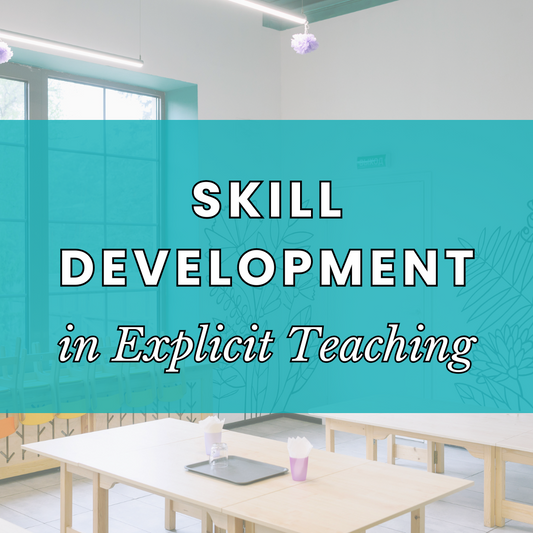
5 Strategies to Reinvent Your Explicit Teaching
Share
Discover effective explicit teaching strategies to enhance student outcomes. By incorporating modelled examples, scaffolding, and a gradual release of responsibility, these strategies utilise the "I Do, We Do, You Do" structure, ensuring students gain the skills needed for independent learning. Dive into five innovative methods to reinvigorate your teaching practice and help your students succeed.
What is Explicit Teaching?
Explicit teaching uses modelled examples, scaffolding and the gradual release of responsibility.
The highly structured approach uses the I Do, We Do, You Do lesson structure to teach students the necessary skills for completing a task. It focuses on the process of learning. The ultimate goal of explicit teaching is to set students up for success in completing a task independently.
Click here for more information about explicit teaching. You can also learn more about explicit teaching lesson design here.

If you are like most teachers, then you are always reflecting on your teaching practice and how you can improve student outcomes in your classroom. Here I offer you 5 ways you can reinvent your explicit teaching.
Explicit Teaching Strategies You Can Use
1. Use Examples and Non-Examples in Concept Definitions
Teach new concepts to students by giving them concept definitions and examples. Explicit teaching aims to ensure that the student knows what the concept means and how to use it. Essential components for establishing an understanding of a new concept include providing a definition and examples.
Defining is when you give a student a precise explanation for key concepts.
Examples are when you supplement the definition with an example to help clarify the meaning of the word or phrase. This is most effective with the use of visuals.
Non-examples are words or phrases that do not fit a specific category, but still have some similarities to it. For example, if someone wanted to teach about different types of animals, they might say "a non-example would be something like a plant." These non-examples clearly show students what is not included in a definition or concept, helping to clarify misunderstandings or common misconceptions.
2. Use Graphic Organisers to Reinforce Learning
Graphic organisers are visual aids that help learners to organise the information they are learning. They are a form of explicit teaching because they provide visual cues to help learners remember the material.
Teachers can use graphic organisers in various ways to make learning more engaging for students. They help scaffold tasks, serve as pre-reading tools, aid in summarising or analysing information, and organise thoughts and ideas.
3. Plan Feedback into your Daily Lesson Routine
Feedback is an important part of the learning process. It helps to improve the quality of our work and it also helps us to understand what we are doing right or wrong. In order to provide feedback, we must know what our goals are and how we want to achieve them. This is defined in the success criteria that is shared with students.
Giving feedback against a success criteria must be a priority in the classroom. By planning it into your lesson routine, students begin to know that this is an important part of the learning process. The routine also ensures that the crucial process of giving feedback is not skipped or forgotten about. Students will be more open to feedback if they know that this occurs on a daily basis.
4. Provide Opportunities for Practice
Providing opportunities for practice is a highly effective way to strengthen learners' abilities. This can be done in the guided and independent practice part of the lesson (We Do, You Do), and consolidation of taught concepts.
Effective learning is a result of the learner being able to identify their mistakes and receive feedback on those mistakes. Providing opportunities for practice will allow learners to have more chances to make mistakes and receive feedback on those mistakes, thereby strengthening their skills. Opportunities for practice might include morning routine activities, fast finisher booklets, revision lessons, games, group rotations and many more.
5. Use Lesson Planning Templates That Work for You
Lesson planning templates can be a great way to plan your lessons. They can help you by providing you with a framework for an explicit lesson and some ideas for teaching strategies within the pedagogy.
Lesson planning templates are often used by teachers who: are new to teaching, want to try out new things in their classroom or who simply want to save themselves planning time. They provide an easy way to start off and give teachers some time to figure out what works best for them.
In addition to this, lesson plan templates give you a pedagogical structure and ensures that you maintain consistency in your teaching. This can help your students to focus on the content as opposed to the lesson process, therefore reducing their cognitive load.



